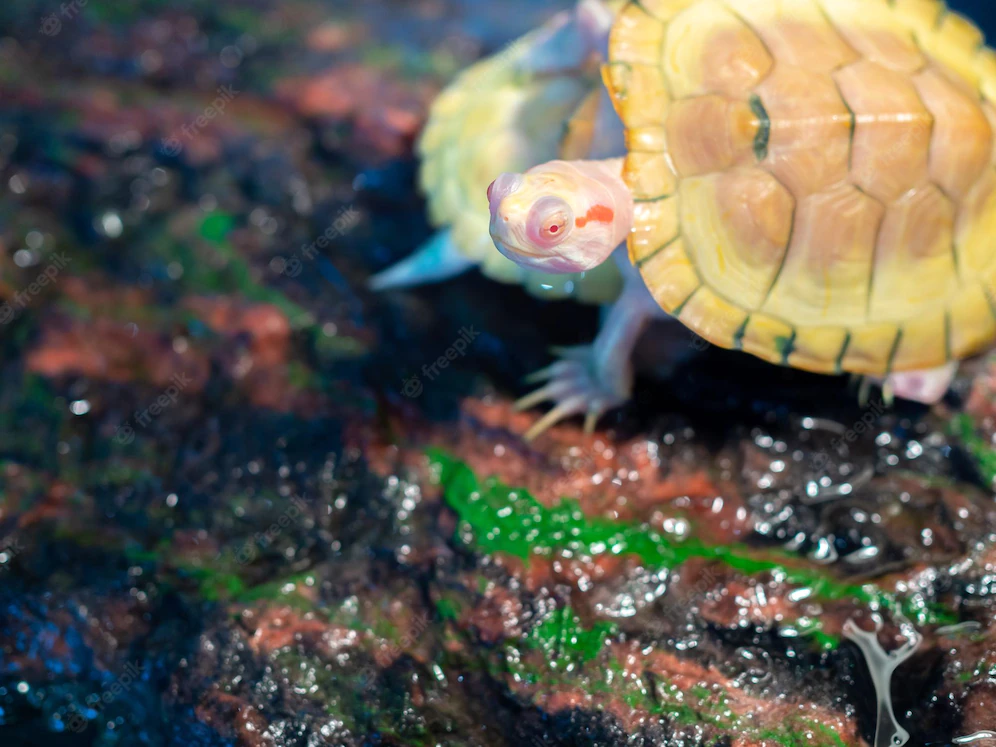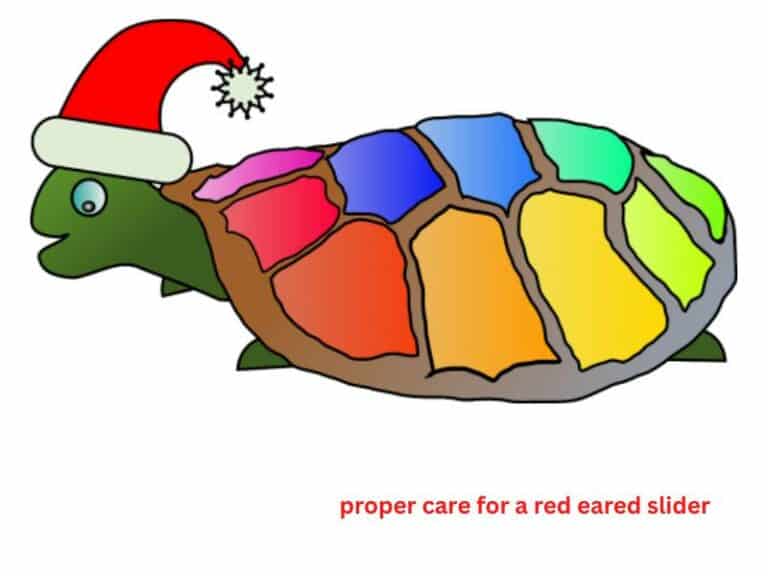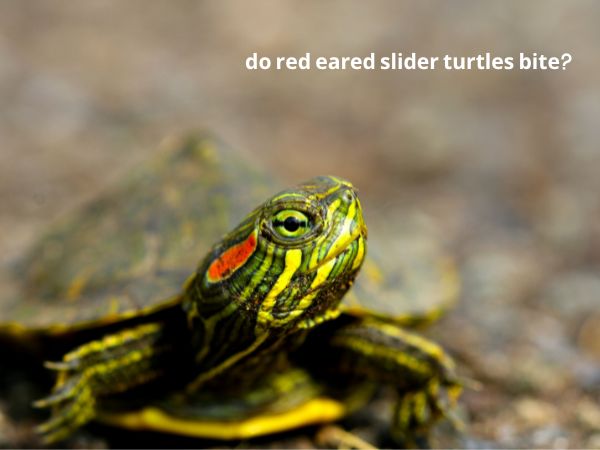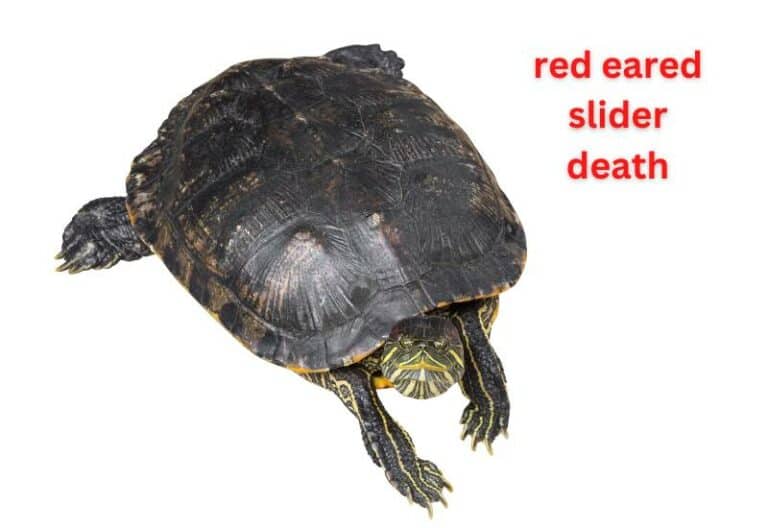A short lifespan of Albino Red Eared Slider
Today we discuss the lifespan of Albino Red Eared Slider. Albino red ear sliders turtles, scientifically known asTrachemysscriptaelegansis one of the rarest, cutest, and one of the distinctive pets you can think of. They are quite hard to find in nature but more common in captivity.
In this article, we are to talk about everything you need to about albino red ear sliders and if you are enthusiastic enough how can you set up your own captivity?
lifespan of Albino Red Eared Slider
Is the Albino Red Eared Slider rare?
Well, get the number like this, the chance of being an albino red-eared slider from red eared slider is 1 in 10000 but the chance of living is nearly zero which makes them really unique. Although these chances increase when an albino red eared slider meets with another. This is actually the way of breeding in captivity.
Albino Red Eared Slider – how they got their name
The main reason for albinism is the loss of tyrosinase (TYR) mRNA expression which prevents melanin synthesis and causes albinism. So, these turtles are born with this mutation. Red ears come from the red strip on their face where ears should be and their amazing ability to quickly slide off from rocks to water gives their last name.
[amazon box=”[amazon bestseller=”Red Eared Slider” items=”3″ template=”table”]
Original &habitat
Just like other albino species albino red ear sliders also occur naturally but they are extremely rare and highly vulnerable due to their bright color which tent to attract predators. Red Eared Sliders are most commonly found along the Mississippi River and the Gulf of Mexico. They tend to prefer warmer climates. Consequently, they are most commonly found in the Southeast of the United States.
Their incapability of blending with nature is another reason for their captivity. In the early 1980’s Albino Red Ear Sliderswere the first in the albino turtles family to produce in captivity.
Behavior
Like many other turtle species, they search exclusively for food and mates in water. A Red Eared Slider’s digestion is made easier by eating in water. Despite that, Albino Red Eared Sliders can nonetheless be found on shorelines basking in the sun, although they tend to be less safe from predators in water than on land. Because Albino Red Eared Sliders are cold-blooded animals, they need direct sunlight to survive. Since they have bright skin and shells, they attract more UV rays when they bask.
Hibernation
There are many differences between Red-eared sliders and other turtles, but this is the biggest one, they don’t hibernate, they Brumate. During Brumating their eating, activity, and breathing slow down. They don’t even relieve themselves.
What do Albino Red Eared Sliders eat?
There is no doubt that albino red-eared sliders are rare and unique among all turtle species. Luckily their care is similar to that of a normal red eared slider. Like most other turtles Fruit, vegetables, meat, insects, and pellets are all food sources for Red Eared Sliders. In addition to pellets, pets should be fed occasional fruits, vegetables, and dried insects as part of a balanced diet.
Red eared sliders are not allowed to eat a few things, so to make finding what they can eat easier, I have divided what they can eat into five categories, and listed what they cannot eat as well since this is the shorter list. They are as follows:
- A variety of fruits
- Vegetables
- The consumption of meat
- Processed foods
- Pelleted food
A variety of fruits
The majority of fruits are good for turtles, but some contain high levels of phosphorus and citric acid, which are unhealthy for them. Despite phosphorus blocking calcium absorption, citrus acid irritates a turtle’s stomach, which is necessary for healthy bones and shells.
It is recommended that you avoid the following fruits: avocado, kiwi, banana, pomegranate, orange, lemon, lime, grapefruit, coconut, guava, and apricot.
Vegetables
As with fruits, vegetables are good for turtles. However, some vegetables contain a lot of phosphorus. Which is not good for your beloved pet’s health. Including those, there are some other vegetables that you should avoid like eggplants, cucumbers, and mushrooms because their nutritional value literary zero.
There are a few vegetables that should be avoided since they contain a lot of phosphorus: edamame, sprouted peas, peas, artichoke, parsnip, water chestnut, broccoli, fennel, sweet potatoes, cauliflower, asparagus, beets, pumpkin, and turnips.
The consumption of meat
Turtles generally enjoy all types of meat, whether it comes from cows, chickens, pigs, or fish. You only need to make sure that the meat is bone-free and fat-free. The meat may need to be cooked for safety reasons. Cooking the meat might be the best idea. Just make sure no salt, pepper, or any kind of spice/flavor.
Processed foods
Turtles can not tolerate processed food. The following food items are not permitted: pasta, bacon, salami, cheese, bread, sausages, or chips.
Pelleted food
It’s true that pellets are processed foods, but they are specially designed for turtles. Brand-specific differences can, however, lead to significant differences in food quality and flavor.
How to Feed Albino Red Eared Slider?
There have been numerous methods of feeding turtles have been described over the years. However, two stand out as the most used and most efficient, out of all the options. Those are 15 minutes method and the size of the head method. Let’s discuss those.
15 minutes method
There is nothing complicated about the 15-minute method. Let your turtle eat for 15 minutes after giving it a lot of food. Once the time is up, you remove the food. It’s certainly not the best method, no matter how simple it might seem. It is because red-eared sliders, whether they be wild or domesticated, are opportunistic feeders. In other words, because they don’t know when they’ll be able to eat again, they will eat everything they can as quickly as possible. They will not abandon this mentality even if they are fed regularly. Since there is a risk of overfeeding with this method, it has been losing popularity lately.
The size of the head method
according to this method, you should feed your turtle as much food as would be needed to fill its head if it were hollow. This method can be applied most easily with a small container like a medicine cup/shot glass. Containers should be roughly the same size as turtle heads without necks. Then feed your turtle inside the container. It’s that simple.
The amount of food you would need to fill its head does not always have to be measured in a container, you can always estimate it. It won’t bother the turtle if you give your turtle a little bit more or less. Small differences will not affect your turtle. As a result of this method, you will know how much food you need to give your turtle based on the size of the turtle. A turtle’s food requirements will change as he or she grows. Research has shown that many people using this method reported great results, and nobody encountered any difficulties. In my opinion, the size of the head method is the better option of the two. There is another important reason, a more diversified feeding schedule is possible with this method.
Feeding Schedule
When planning a feeding schedule for your turtle, the first thing you need to consider is the turtle’s age. The amount of food that red eared sliders require as babies, juveniles, and adults is different.
In the following sections, you will find the feeding schedule for different age groups of albino red-eared sliders. A baby turtle needs to eat the most often of any of the age groups because their growth requires a great deal of energy. So the size of the head method should be used to feed baby red-eared sliders on a daily basis.
When turtles become juveniles, they need a different feeding schedule. Juveniles are considered Red Eared Sliders when they turn 1 year old. Turtles that are juveniles grow faster than adults. As a result, they need to be fed quite frequently. There are two options here that you can choose from. Either you can use the size of the head method once every 2 days or feed them half of that every day.
A red eared slider’s growth is very slow, and after a period of time, it will stop growing altogether. This means that they will need less food than babies and juveniles. The best method of feeding your red eared slider is once every three days, based on the size of the head method. When compared to the other age groups, this might seem to be insufficient food but remember that turtles have larger heads as they get older, and they also have larger food portions, so you don’t have any problems. You are giving your turtle much more food than he did when he was a baby eating regularly.
How do I set up my turtle’s habitat?
Red eared sliders spend the majority of their lives inside the tank, so it is essential to provide them with the most comfortable environment possible. It is fortunate for us that red eared sliders do not require too many items in their aquarium, but what they do require is absolutely necessary.
To build the perfect setup for red eared slider tanks, you will need the following items:
- A tank of the appropriate size
- Area for basking
- Water heater
- Water filtering device
- Lamps for heat and UVB
A tank of the appropriate size
Red eared sliders require a tank that has 10 gallons per inch of the shell so it is important to follow this rule when choosing a tank. According to the rule, the tank should have an additional 10 gallons for every inch of shell your turtle has. The aquarium should be able to hold at least 30 gallons if your red eared slider has a 3-inch shell. It’s quite easy to misunderstand the rule, despite its simplicity because most people do not consider how large their turtle will become when choosing a tank. For example, red eared sliders are capable of growing more than one inch per year while they are young. To avoid having to change the tank every year, I recommend getting a tank that is at least 2/3 times bigger than what you need today.
Area for basking
In addition to regulating their body temperature and assimilating calcium, Red Eared Sliders require basking in order to ensure proper health. Generally speaking, a basking area is defined as a simple platform above the water that is illuminated by both a heat bulb and a UVB bulb. A platform is only required to be stable; its design is entirely up to you. In terms of basking areas, as you can see, you have two options: you can either construct one or purchase one. Nevertheless, you should ensure that the basking area is stable in both cases.
Water heater
The time has come for you to choose a water heater. It is necessary to maintain a water temperature of 75 to 80 degrees Fahrenheit for Red Eared Sliders. In addition, you should look for a water heater that can be adjusted to a specific temperature, since water in the tank tends to become colder during the winter and warmer during the summer. That’s why It is important that your heater is capable of adjusting to temperature changes. It is also important to have a guard on your heater. Because the majority of heaters are designed for fish, which are less aggressive and more agitated than turtles, if they are not guarded, they are likely to break.
Water filtering device
The next step is to find a good water filter. In any tank, water filters are vital for the proper functioning of the system, since they maintain the purity of the water. Therefore, it is extremely important that you choose one that is of high quality. Usually, filters are rated according to how much water they can filter, for example, 20 gallons, 50 gallons, 70 gallons, etc. So you might expect to need a 30-gallon filter for a 30-gallon red eared slider tank. You will be extremely disappointed because Fish-filled tanks are used to test water filters, but red eared sliders are messier. Therefore, you should get60-gallon water filter for a 30-gallon red eared slider tank. Other important features of a water filter are its silence and its ability to prevent clogs.
Lamps for heat and UVB
Heat lamps: In order to bask effectively, red ear sliders require temperatures of 85 to 95 degrees Fahrenheit. In this case, you will need a bulb that is capable of producing sufficient heat. Problem is, bulbs come with 50/75/100watts. As such, you are responsible for selecting which bulb is best for you and determining how far away it must be from the basking area in order to achieve your desired temperature. The best way to measure the temperature in your basking area is to use an infrared thermometer. If you are able to afford one, it will help you figure out the exact temperature of the area. It is important that you avoid placing the bulb below 4 inches, as anything below that could result in the turtle becoming burned.
UVB lamps: Last but not least, the UVB lamp. In order to ensure that you buy a UVB light that is producing UVB wavelength light, you should ensure that the box states “This bulb produces UVB wavelength light” or something like that. Occasionally, there are products whose names contain UVB, but these products do not produce UVB light. We will now discuss the two different forms of UVB light, which are Bulb Light and Tube Light.
Bulb Light: There are two options for lighting, with the bulb light generally referred to as “compact light”. Typically, there is a good variety of them available at a reasonable price, and they resemble most normal white light bulbs. However, there are reports that this type of bulb causes photo-kerato-conjunctivitis. The term “photo-kerato-conjunctivitis” refers to a problem with the eyes caused by overexposure to ultraviolet (UVB) light.
Tube Light: The most common recommendation is to buy tube lights. There is one of the greatest advantages of using them: they are totally safe, as there are no known problems, as there were with the bulb that caused photo-kerato-conjunctivitis. Typically, they are a bit more expensive than standard bulbs, but not by a great deal. Overall, I believe tubes are the best choice.
Albino Red Eared Slider Turtle Lifespan
There is an average lifespan of 25 to 30 years for red-eared sliders and their size varies between 6 and 12 inches depending on their size. The average size of females tends to be a bit larger than the average size of males.
Determine the Gender
The red eared slider cannot be easily distinguished from its female counterpart because most of their distinctive characteristics are found only when they reach maturity. You could try to determine the gender of your baby red eared slider, but this is generally not possible. You may be able to determine the gender of your turtle without too much difficulty if it is already one or two years old.
There are distinct differences between red-eared sliders in size and appearance, which makes them fairly easy to find their sex.
Dimensions and shapes
Red-eared sliders reach sexual maturity at around two to five years for males and five to seven years for females, and then their size differences should be evident. A female is typically larger than a male once they reach maturity, around 4 inches / 10 centimeters apart.
Sculpture of shells
Instead of turning over your red-eared slider to look under the shell, hold it up and look up. Identifying the gender of your red-eared slider can be done by examining the plastron at the bottom of the shell. Females have a flat plastron, whereas males have a concave plastron. It provides the male with adequate room to mount the female during mating while giving the female enough space to store her eggs.
Size of claws
There is a difference between the claws on male and female red-eared sliders. Short, stubby claws are characteristic of females. During mating season, the claws of the males are thought to attract females. A male uses his claws to hold onto a female’s upper shell during mating.
Tails
Red-eared sliders can be distinguished from females and males by looking at the length of their tails. A female has a short, slender tail, while a male has a longer, thicker and more robust tail. A male’s vent (cloaca) is situated close to the tail’s end.
If you follow these characteristics of your adult turtle, I believe it will be easy for you to determine your turtle’s gender.
Possible unusual behavior
It will take some time for you to become familiar with the normal behavior of your red-eared slider. Gradually you will know your turtle’s activities. Thus, you may also notice some odd behavior from time to time. There is a possibility that your red-eared slider will behave strangely if something is wrong with your turtle or with its environment.
In this article, we will discuss some of the behaviors you should be aware of, as well as some of the possible causes.
Strange swimming: It is common for people to frantically swim as one of the strangest behaviors. In order to avoid these problems, turtles should consume a proper diet. When turtles do not receive a proper diet, they will attempt to swim away in search of food. Turtles do not understand that swimming through the glass makes no sense, so they will continue to swim through it until they realize they will not get anywhere. The turtle may attempt to swim elsewhere if there are many stress factors, such as excessive noise or other aggressive animals nearby, such as dogs or cats. During pregnancy, turtles look for safe places to hide their eggs in order to avoid becoming exposed to predators.
Digging: There is nothing abnormal about your turtle digging through the substrate in your tank from time to time if you have one. It is possible that your turtle may be pregnant if you see her digging excessively. Digging is a way for them to find a good place to lay their eggs.
Escape attempts: The frantic swimming that we briefly discussed is an example of an escape attempt that is the result of improper care conditions. Various methods can be used to escape the tank, including climbing and hitting it and the reasons might be stress, pregnancy, or just a bad diet.
Health problems: If you have concerns about the health of your turtle, or if you notice any strange spots or discoloration on its shell, you should seek veterinary assistance.Red eared sliders are susceptible to a variety of diseases, so you should not take any chances. Veterinarian care is the only appropriate course of action.

Conclusion
So far, we have discussed everything about Albino Red Eared Slider. Hopefully, this article will be able to answer all of your questions regarding how to take care of your albino red eared slider and what you need to know. You can always reach out to us in the event that you have any questions.


